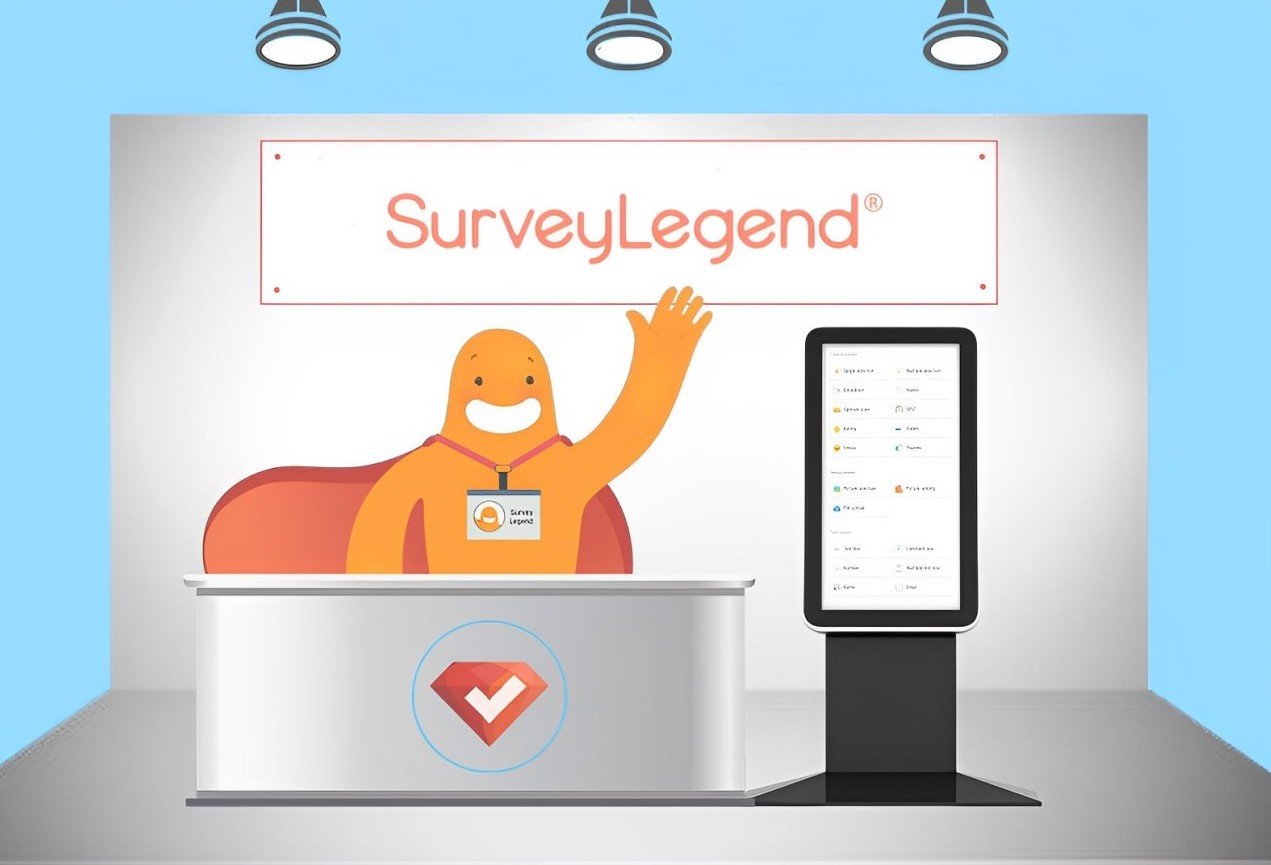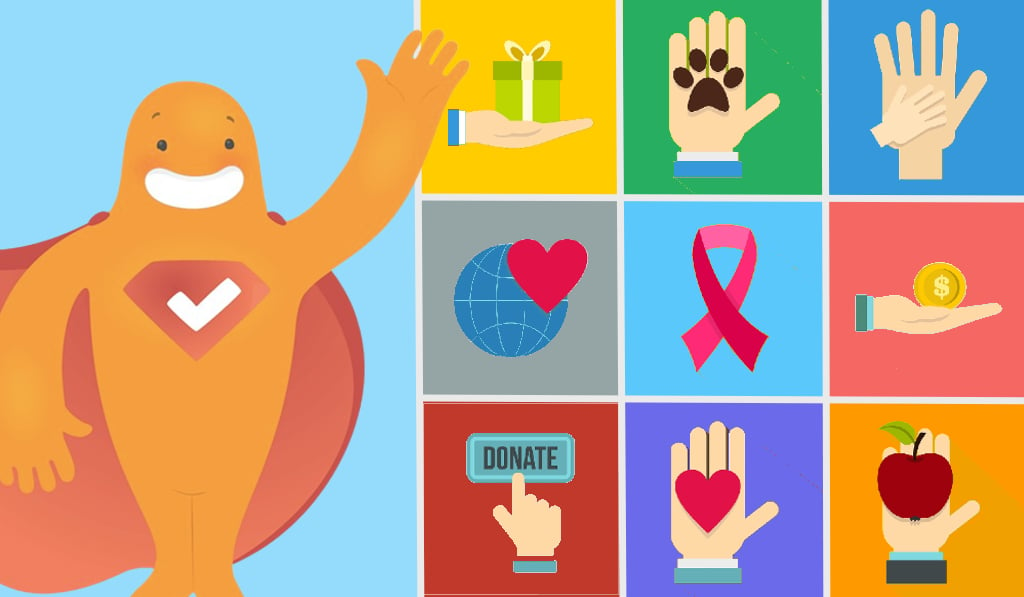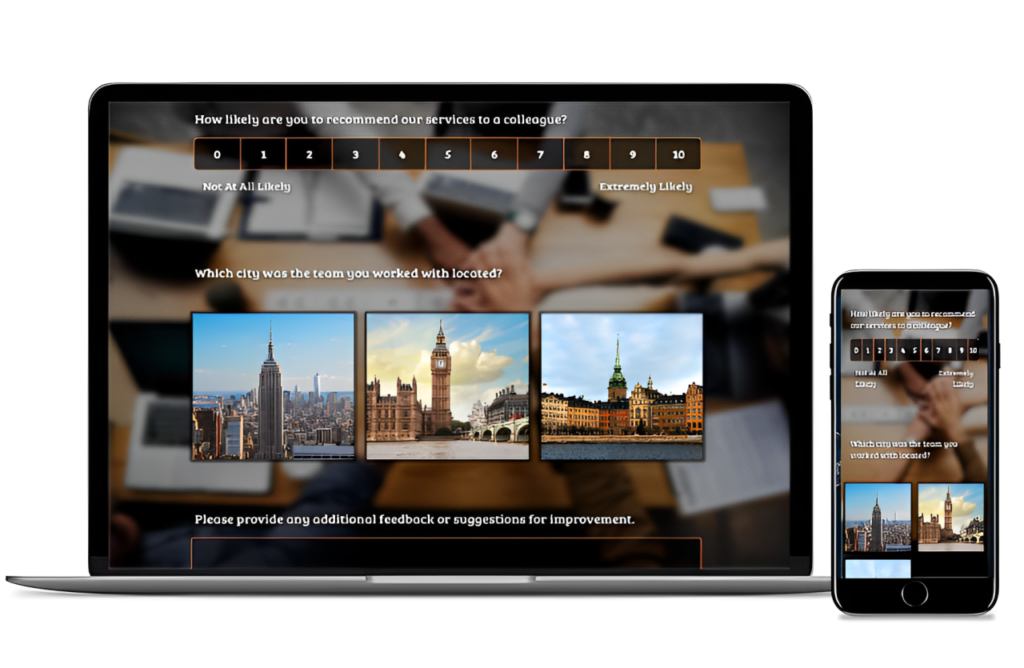Trade shows are big business! With the exception of the pandemic years, in which social distancing was the norm, annual global exhibition spending is approximately $140 billion. Therefore, it’s important for companies and organizations putting on trade shows to keep their exhibitors happy. One way to do this is by creating exhibitor surveys.
Create Your FREE Trade Show Exhibitor Survey Now!
What is a Trade Show Exhibitor Survey?
A trade show exhibitor survey is a tool used by event organizers to gather feedback and insights from individuals or companies who have exhibited at their event. These surveys typically include questions aimed at assessing exhibitors’ overall satisfaction with the event, the effectiveness of the venue, the quality of attendee traffic, the usefulness of promotional activities, and any specific challenges or suggestions for improvement. Exhibitor surveys may also be conducted prior to the event, to gauge exhibitor expectations and to determine their needs in advance.
What Do Exhibitors Look For In a Trade Show?
For exhibitors, the most important aspect of a trade show is the audience. To make the expense of exhibiting worthwhile, they need to attend shows with an audience demographic that fits whatever they’re selling. That’s why it’s so important that when marketing to exhibitors, you include details about your past trade show attendees and who you expect to be at your upcoming event. Expected attendance is also key; even if the demo fits, there needs to be enough of an audience to make it worth it.
The second most important aspect to an exhibitor is their return on investment (ROI). Exhibiting at a trade show can require a sizable financial and time investment. When you add up the price of a trade show booth, booth space, signage, handouts, travel, accommodations, and other costs, it may cost an exhibitor tens of thousands of dollars, even for a small booth (referred to as an inline booth). Big brands with larger exhibits (often called peninsula or island exhibits) may spend ten times more. So, it’s important that you can show an exhibitor that the ROI potential justifies the expense.
7 Areas To Focus On and Questions To Ask on Trade Show Exhibitor Surveys
When designing an exhibitor survey to distribute after a trade show, it’s essential to include questions that gather feedback on various aspects of the event. Here are some key areas and example trade show questions you might consider including on a trade show survey.
1. Overall Satisfaction
- How would you rate your overall satisfaction with the event?
- Do you think you will return for next year’s event?
- Would you recommend this event to others in your industry?
2. Venue and Equipment
- How satisfied were you with the venue’s facilities and amenities?
- Were the exhibition space and layout conducive to showcasing your products/services effectively?
- Was the technology/equipment you needed readily available?
3. Attendee Traffic and Engagement:
- Did the attendee traffic at the event meet your satisfaction?
- Were the attendees in the demographic or industry you expected?
- How would you rate the quality of interactions with attendees?
4. Promotion and Marketing
- How effective were the event’s promotional activities in driving attendee engagement to your booth?
- Did you feel adequately informed about the event’s promotional efforts before the event?
- Did you interact with any of the event’s sponsors?
5. Logistics and Support
- How satisfied were you with the logistical support provided by the event organizers?
- Was the set-up and tear-down of your booth efficient?
- Were the pre-event communications clear and helpful?
6. Networking Opportunities
- Did you find ample networking opportunities at the event?
- Were the networking events or sessions valuable for establishing connections in your industry?
- Did you attend the networking cocktail party/dinner? (if applicable)
7. Suggestions for Improvement
- What aspects of the event could be improved to better meet your needs as an exhibitor?
- Do you have any suggestions for enhancing future editions of the event?
- Is there anything else you would like to share about your experience as an exhibitor at this event?
Remember to consider including a mix of quantitative (rating scale) and qualitative (open-ended) questions to gather both numerical data and detailed feedback. Read more about the Differences Between Quantitative and Qualitative Surveys.
Create Your FREE Trade Show Exhibitor Survey Now!
Three Things to Avoid on a Exhibitor Trade Show Survey
When creating your exhibitor survey, there are some things to avoid to help ensure that your survey gathers meaningful and actionable feedback from exhibitors and that people complete them versus dropping off out of frustration.
1. Asking Leading of Loaded Questions
A leading question on a trade show exhibitor survey may ask, “How unique did you find our trade show?” As you can see, this question implies that the event was unique and may bias the respondent’s answer. A better-worded question would be, “Did you find our trade show unique?” A loaded question should also be avoided, because no matter how a respondent answers, they’re agreeing to something. For example, asking “Will you be back for another one of our innovative trade shows next year?” In this case, even if the respondent replies “no,” they’re still agreeing that the event is innovative whether they think it was or not. Read more about leading and loaded questions.
2. Asking Biased Questions
Survey bias occurs when “systematic errors are introduced into sampling or testing by selecting or encouraging one outcome or answer over others.” For example, double-barreled questions that put two questions into one, such as “Did you like the venue and equipment?” This question could have two answers, as the respondent may have liked the venue but found the equipment lacking, or vice versa. So, it’s best to simply split it into two questions.
3. Making Surveys Too Long
Some exhibitors may have just spent a week at the trade show and may not be in the mood for a survey, so try to keep your surveys short if possible. You might even consider doing a number of microsurveys each day, sent via text once attendees have opted in. These would ask 5-7 quick exhibitor survey questions each day for higher levels of engagement. Plusm this way you’re collecting feedback “in the moment” when insights, suggestions, or criticisms are fresh on the exhibitor’s mind.
Analyzing Trade Show Exhibitor Surveys
Analyzing exhibitor survey results involves several steps to gain insights and identify areas for improvement. Here’s some things to consider when doing an analysis of survey results.
Quantitative Analysis
This involves calculating averages, means, and percentages for questions with rating scales. When doing this, you’ll want to look for trends and patterns in the data. For example, are there particular aspects of the event that consistently received high or low ratings? This is something to focus on maintaining or improving for the next event. You may also want to segment the data based on relevant criteria such as exhibitor size, industry, or years of participation. This should be done to identify any differences in feedback among different groups.
Qualitative Analysis
This involves reviewing any open-ended responses to identify common themes, issues, or suggestions mentioned by exhibitors. You should categorize and code the qualitative data to organize it for analysis. This might involve grouping similar comments together under specific topics or areas of concern.
Comparative Analysis
If you have conducted previous surveys following events, compare those survey results with the results from this trade show. If possible, try to identify any improvements or declines in exhibitor satisfaction over time. Then, benchmark the survey results against industry standards or best practices to assess how the event’s performance compares to similar events.
Root Cause Analysis
If you want to really get at the heart of things, dig deeper into areas with particularly low ratings or recurring issues to understand the underlying causes. This may involve conducting follow-up interviews with exhibitors or internal discussions with event staff.
Prioritize Action Items
Based on your survey analysis, prioritize action items for improvement. Focus on addressing high-impact issues that are likely to have the greatest positive effect on exhibitor satisfaction and event success. Consider the feasibility and resources required for implementing proposed changes when prioritizing action items.
Communicate Findings and Plan Next Steps
Prepare a summary report for sharing that includes the survey findings, with key insights, recommendations, and proposed action items. Share the report with relevant stakeholders, including event organizers, venue staff, and other key decision-makers. Finally, develop an action plan outlining specific steps to address the identified issues and improve the exhibitor experience for future events.
By following these steps, event organizers can effectively analyze exhibitor survey results and use the findings to make informed decisions aimed at enhancing the overall quality and success of their events. SurveyLegend provides a wealth of analytics in real-time and at the conclusion of every survey which makes this step much easier!
Conclusion
Holding a successful trade show means bringing together the right mix of exhibitors and attendees (be sure to check out our blog focusing on attendees, How To Create A Conference or Summit Survey). For event planners and companies putting on a trade show, it’s important to survey exhibitors to understand how successful they found the event to be, because what you don’t know can hurt you; if they were unsatisfied but you’re unaware, you won’t be able to make improvements and they won’t be back for the next one.
Ready to create your exhibitor survey? Check out our event survey templates here or create your own! Event planners love our easy-to-use survey tool, which makes designing beautiful and insightful surveys a cinch. You can choose from many different question types and themes. And, at the conclusion of the survey, you’ll receive powerful analytics. Start today for free!
Do you host trade shows? Or are you a regular exhibitor? Let us know what you think is most important for creating a successful event!
Create Your FREE Trade Show Exhibitor Survey Now!
Frequently Asked Questions
According to trade show statistics, there are approximately 20,000 international trade show events each year. The United States hosts the most, at about 10,000, which accounts for nearly half the world’s trade show events each year.
Choosing a trade show destination involves looking at which cities have the best infrastructure and attractions.
- Paris, France
- Frankfurt, Germany
- Shanghai, China
- Dubai, UAE
- Las Vegas, USA
Trade show surveys should be conducted to get exhibitor and attendee opinions of the event. Both groups need to be satisfied in order to keep attendance high for future events. Only by surveying will event planners know if the trade show met expectations.




